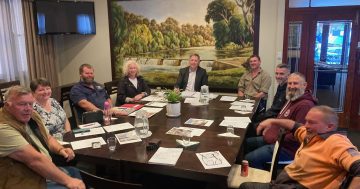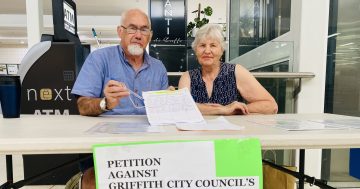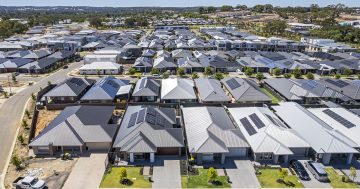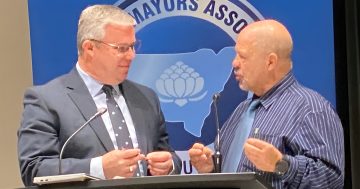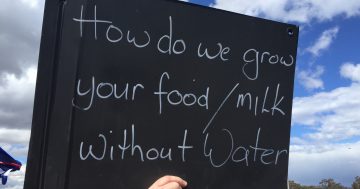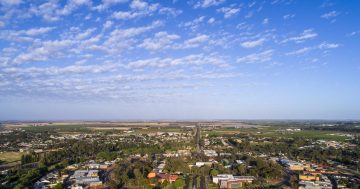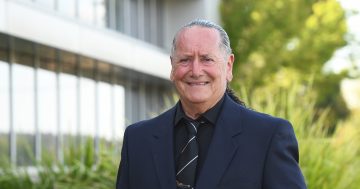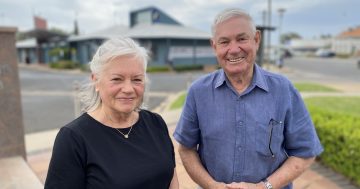
A group called Narrandera Concerned Ratepayers opposed the rate hikes. The group includes David Farley, Kae Smith, Anthony Marsh, Debra Metcalf, Wesley Hall, Ben Mahy, Steve Rolfe, Shane Clancy and Craig Broad. Absent from the photo: Warwick Heckendorf, Anita Houldsworth and Michael Gray. Photo: Baz Tuppin.
Griffith and Narrandera residents could see their council rates increase substantially from July, after a State Government regulator approved requests to raise charges by a much higher amount than the standard annual variations.
NSW Government body the Independent Pricing and Regulatory Tribunal (IPART) has given Griffith City Council the green light to increase rates by 22 per cent over the next two years, during which time Narrandera Council can also its charges by 48 per cent.
The average resident in both areas is likely to see their annual rates rise by around $250 by July 2026. Businesses and farmers face even higher cost increases.
Residents from both towns had presented IPART with petitions and written submissions opposing the rate hikes.
Former Narrandera councillor Wesley Hall, who led a community revolt against his council’s proposal, said IPART’s decision shows community views don’t matter.
“We gave them every opportunity to hear from us, but Big Brother in Sydney just makes the decision,” he said.
“We put a lot of work into the submissions; to see the community views ignored is very disappointing … how will pensioners cope with this increase? It’ll be very hard.”
Council charges are regulated by IPART, which sets the maximum annual increase councils can apply to lift rates – generally around three to five per cent a year.
However, Griffith Council made a special application to IPART to raise its rates by 35 per cent over the next three years, while Narrandera applied for a 48 per cent rise over two years.
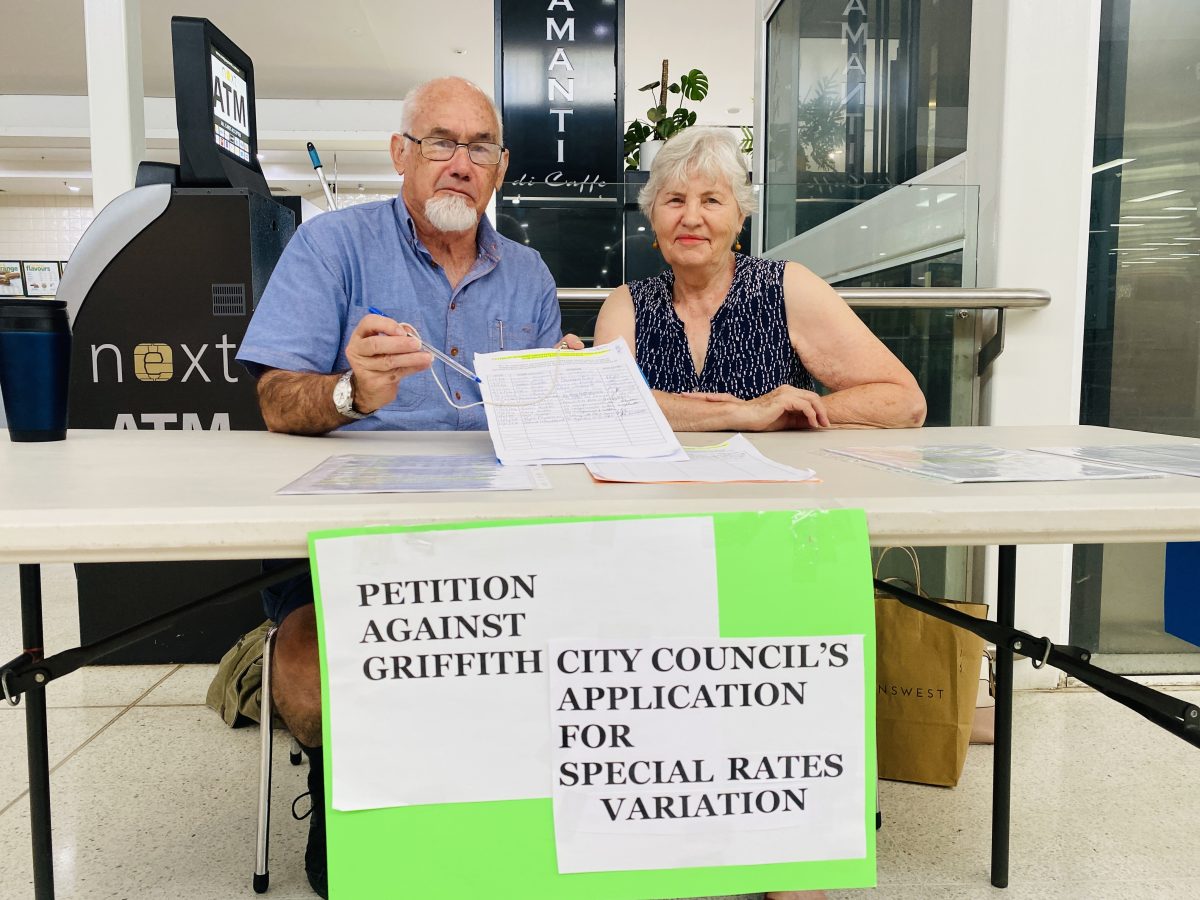
Colin Beaton and Kay Scobie asked Griffith residents to sign a petition against the rate hike at Griffith Central. Photo: Oliver Jacques.
IPART approved the Narrandera application in full and partially approved Griffith’s submission, allowing for a 10.5 per cent increase over each of the next two years only.
The regulator also rejected an application by Snowy Valleys Council – which includes Tumut and Tumbarumba – to increase rates by 42 per cent over the next three years. IPART said this council did not demonstrate financial need or seek appropriate community consultation.
Griffith and Narrandera councils argued rising costs and reduced financial assistance by the NSW Government put them in a weak financial position, and rate hikes were necessary to avoid cuts in services.
“We found that, on balance, the [Griffith] council did not meet the criterion of demonstrating financial need. It articulated a financial need for the [rate increase] over two years but did not clearly articulate the need for additional revenue beyond this,” IPART stated in its decision.
IPART noted that Griffith Council’s financial projections included the building of a new art gallery in 2026/27, but that new gallery plans had now been shelved.
Carmel La Rocca, president of the Griffith Progress Association, which advocates on behalf of ratepayers, said she was pleased Griffith wouldn’t be hit by the full 35 per cent increase over three years.
“But it’s still an impost on the community,” she said. “The council needs to be really transparent with how the extra revenue will be spent to benefit the community. They should ask for community feedback.
“We don’t need a new art gallery at this point in time, the current one has great potential where it is. People don’t move to Griffith because of shiny new buildings, they come here because it’s a nice place to live.”
Both councils can increase rates from as early as July but have the discretion to decide by how much and when they will be implemented.







